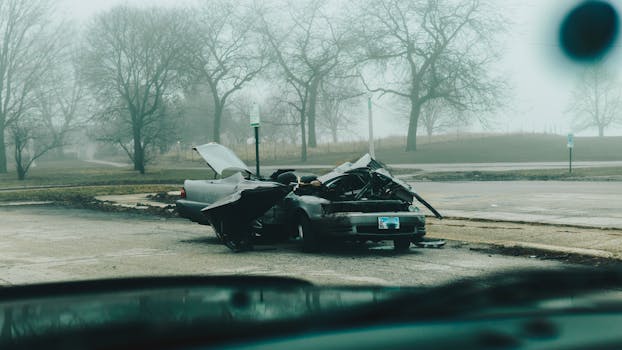The loss of a loved one is always a tragic event, but when that loss is due to the wrongful actions or negligence of another, it can lead to legal proceedings that seek justice and compensation. If you’ve found yourself wondering, “What is the most you can sue for in wrongful death?” or “How does a wrongful death settlement work?” you’re not alone. These are common questions people have when faced with such tragic circumstances.  Additionally, understanding the difference between wrongful death and negligence can help clarify the legal process and how claims are structured.
Additionally, understanding the difference between wrongful death and negligence can help clarify the legal process and how claims are structured.
This article explores these important topics and offers a comprehensive guide to wrongful death claims, settlement processes, and the distinction between wrongful death and negligence.
What is Wrongful Death?
Wrongful death is a legal claim that arises when someone dies due to the negligence, recklessness, or intentional actions of another person or entity. Wrongful death claims are designed to provide financial compensation to the deceased person’s family members or estate for the losses they’ve suffered as a result of the death. These losses can include not only financial support but also emotional suffering, loss of companionship, and other damages.
The types of cases that can lead to wrongful death claims include car accidents, medical malpractice, defective products, workplace accidents, and criminal actions such as homicide. Each state has its own wrongful death laws, which dictate who can file the lawsuit and what kinds of damages can be recovered.
What is the Most You Can Sue for in Wrongful Death?
There is no universal cap on how much a family can sue for in a wrongful death case, as this varies widely depending on the jurisdiction and the circumstances of the case. However, there are several key factors that affect the amount of compensation:
1. State Laws and Damage Caps
Many states impose caps on certain types of damages in wrongful death cases. For example, some states limit the amount of non-economic damages, which include compensation for pain and suffering, loss of companionship, and emotional distress. These caps can range from a few hundred thousand dollars to several million, depending on the state. However, not all states have caps, and in those that don’t, there may be no limit to how much can be awarded in a wrongful death lawsuit.
In contrast, economic damages, which cover tangible losses such as lost wages, medical expenses, and funeral costs, are typically not subject to caps. The amount awarded for these damages is often based on the deceased person’s earning potential, the financial contributions they made to the family, and the direct expenses related to the death.
2. The Decedent’s Age and Earnings
One of the major factors that influence the value of a wrongful death lawsuit is the age and earning capacity of the deceased. The younger the individual and the higher their income, the larger the economic damages may be. This is because the court or jury will consider how much the person would have likely earned over the course of their life and the financial support they would have provided to their family.
3. Dependents and Family Circumstances
Another important factor is the number of dependents the deceased left behind. For example, if the decedent was a parent of young children or the primary breadwinner of the household, the compensation may be higher to reflect the financial support that would have been provided. Courts will also take into account the emotional suffering experienced by the surviving family members, which can increase the non-economic damages awarded.
4. Punitive Damages
In cases where the defendant’s actions were particularly egregious, punitive damages may be awarded. Punitive damages are intended to punish the wrongdoer and deter similar conduct in the future. These damages are often much higher than compensatory damages (economic and non-economic) and can significantly increase the total amount of the lawsuit. However, punitive damages are not available in all wrongful death cases and may be subject to separate caps.
How Does a Wrongful Death Settlement Work?
Most wrongful death cases are resolved through settlements rather than going to trial. A settlement is an agreement between the parties to resolve the case without further litigation, and it typically involves the defendant (or their insurance company) paying a sum of money to the plaintiff in exchange for dropping the lawsuit.
1. Filing the Lawsuit
The process begins with filing a wrongful death lawsuit, usually by the family members or representatives of the deceased’s estate. In many states, only certain family members, such as spouses, children, or parents, are allowed to file the claim. The lawsuit will detail the circumstances of the death, the damages being sought, and the basis for holding the defendant liable.
2. Negotiation and Mediation
Once the lawsuit is filed, both parties will typically engage in a process of negotiation. This can include informal discussions between the lawyers, as well as more formal methods such as mediation. Mediation is a process where a neutral third party (the mediator) helps the parties come to a mutually acceptable agreement.
Negotiations often focus on the amount of compensation, with the plaintiff’s side presenting evidence to support their claims for economic and non-economic damages. This can include expert testimony on the deceased person’s earning capacity, as well as testimony from family members about the emotional toll of the loss.
3. Settlement Agreement
If the parties reach an agreement, they will draft a settlement agreement outlining the terms of the deal. The defendant will typically agree to pay a lump sum or structured payments over time, and the plaintiff will agree to drop the lawsuit and release the defendant from any further liability. In some cases, the settlement may also include confidentiality provisions or other conditions.
4. Approval by the Court
In many cases, particularly when minors are involved, the court must approve the settlement to ensure it is fair. This is especially true if the settlement involves a significant amount of money or if there are multiple parties (such as multiple family members) sharing in the settlement. Once the court approves the settlement, the case is officially resolved.
What is the Difference Between Wrongful Death and Negligence?
While wrongful death and negligence are closely related, they are not the same thing. Understanding the difference between the two is important for grasping how wrongful death lawsuits work.
1. Negligence
Negligence refers to a person’s failure to exercise reasonable care, which results in harm to another person. To prove negligence, the plaintiff must show that the defendant owed a duty of care to the deceased, that they breached that duty, and that the breach caused the person’s death. Many wrongful death cases are based on claims of negligence. For example, a driver who fails to stop at a red light and causes a fatal accident could be sued for wrongful death based on their negligence.
2. Wrongful Death
Wrongful death, on the other hand, is the legal claim brought by the deceased person’s family members seeking compensation for their losses. In other words, wrongful death is a type of lawsuit that can be based on negligence (or other legal theories, such as intentional harm). While negligence focuses on the actions of the defendant, wrongful death focuses on the impact of the death on the surviving family members.
Conclusion
Wrongful death lawsuits are a complex and emotionally charged area of the law. They involve careful consideration of both the financial and emotional impact of the loss, as well as legal principles like negligence and liability. Whether you’re seeking compensation for the loss of a loved one or trying to understand the legal process, it’s important to work with an experienced attorney who can help you navigate these difficult waters and secure the justice you deserve.



